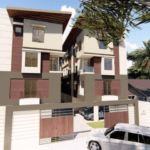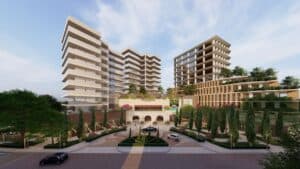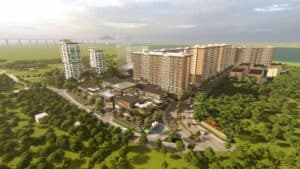In a country like the Philippines, you can expect earthquakes to happen frequently. This is because the country is situated in what is known as the “Pacific Ring of Fire” or an “earthquake belt.” Usually, earthquakes that occur here are very strong in intensity and magnitude, which may lead to destruction of property and loss of lives.

With this as a given, people in the Philippines have learned to live with earthquakes and this is reflected in the construction of homes and other structures.
Italian architect Romolo Nati, who is also the chief executive officer of Italpinas Development Corp., said “structures here in the Philippines are generally well done, following good construction methodology and complying with the local building regulations.”
During the design and construction phase, architects are responsible for site analysis, taking into account various factors such as the site where a structure will be built and the terrain. For the building part, one professional architect turned to the structural engineer.
Architect Oliver Sia said that with earthquakes taken into consideration, “that is the job of the structural engineer. He makes the calculations based on the National Structural Code of the Philippines.”
While architects are equipped to check the circulatory and functional flows of the structure in relation to others, they work closely with structural engineers in the construction of structures to make them resistant to earthquakes.
Sia said that structural engineers are equipped with data on how to compute the size of columns, beams and other parts of the structure based on how heavy the load a building must carry.
“All our plans must coincide with each other. The job of the architect is to double-check if there is conflict with the data contributed by members of the team,” he said.
Nati provided some examples — local structures are often built using reinforced concrete wherein steel bars represent the flexible component, while the cement responds to compression or mainly carries the weight.
There are other features such as base-isolating structures, lightweight construction materials, reinforced foundations and dampers that are incorporated to make structures withstand earthquakes, most especially skyscrapers. The Taipei 101 and Tokyo Skytree are examples of structures that feature the latter, which enable them to withstand earthquakes.
“During an earthquake, a structure usually oscillates or swings backward and forward like a pendulum. Sometimes, vertical oscillation also happens. Well-designed and well-constructed structures must be flexible enough to move within the so-called elastic range,” said Nati.

Even though architects are knowledgeable enough in designing a building and usually head the project, structural engineers contribute by “fine-tuning” the design and adding more details though they follow the lead of the architect.
“But, of course, if the architect’s design is impossible, we adjust and revise if the owner goes for something impractical. The structural engineer will inform the architect where it is ideal to add a column, and we refer back to the owner,” said Sia.
Nati adds that design is not the same everywhere. It depends on the location as each one is given a designated category based on susceptibility to earthquakes. Each category has its own building requirements to guide developers, architects and engineers.
“For example, an area within category 1 will require a different set of requirements compared to an area in category 5. The builder must comply with the requirements and meet certain standards for the particular area where the structure will be built,” he said.
Architect Benjamin Panganiban, former national president of the United Architects of the Philippines, said property owners must know where they want their structures built, especially in areas, which are susceptible to earthquakes.
“If they insist on choosing these locations, then applicable technology should be applied in construction in such a manner that it adapts to such environment and conditions. In short, one has to move to another location or spend more for higher technology,” he said.
If you like this article, share it on social media by clicking any of the icons below.
Or in case you haven’t subscribed yet to our newsletter, please click SUBSCRIBE so you won’t miss the daily real estate news updates delivered right to your Inbox.
The article was originally published in ABS-CBN and written by Katrina Domingo.







More Stories
Vista Land Celebrates 50 Years with Sandiwa: An Event Honoring Leadership, Legacy, and the Filipino Dream of Homeownership
Vista Land Celebrates Love Month in Ilocos Region
Vista Land Bridges Cebuano Heritage and Progress with Valencia by Vista Estates